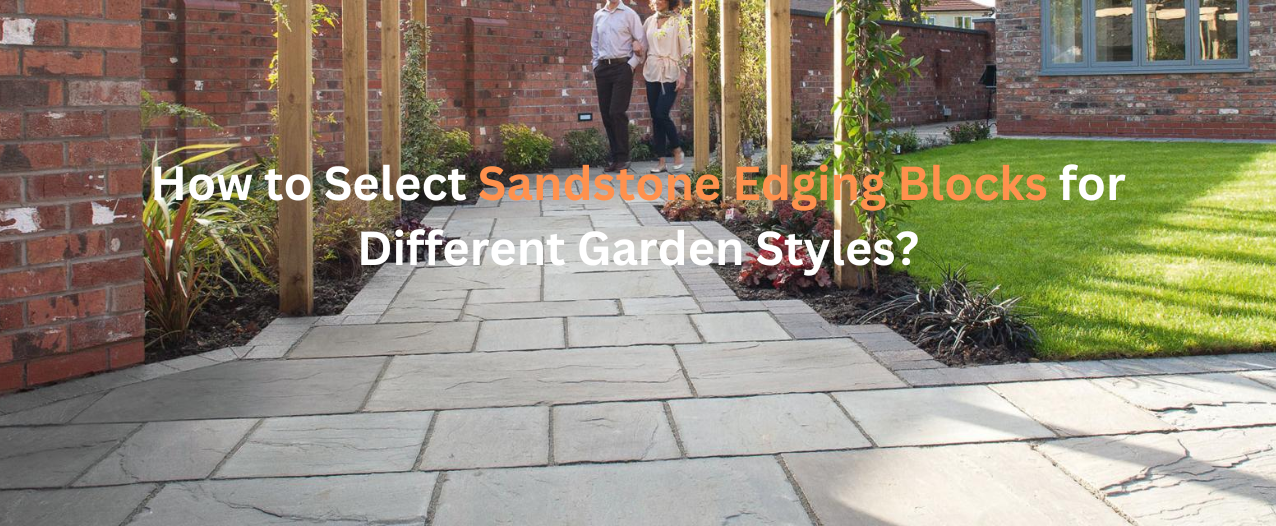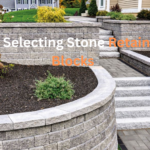A well-managed garden can make a great impact on the look of your house with its eye-catching beauty. More elegance could be added with some sandstone garden edging blocks by providing natural and decent borders in your garden. These blocks can enhance multiple garden styles by adding a soothing, elegant touch.
Hence, getting your hands on the appropriate edging blocks becomes crucial for fulfilling your beauty desires. Here, in this article, we will get a good look at the ideas for choosing the perfect sandstone edging blocks for different garden styles. This guide will provide you with some great garden maintenance tips and measures, so let’s dive in.
Understanding Sandstone Edging Blocks
Coming up with a perfect combination of glance and utility, these edging blocks offer some of the most sturdy, natural, and stylish borders for your garden. In this part, we will talk about the reasons why you should choose sandstone for your garden and the types of sandstone edging blocks you can go for, so let’s get into this.
Why Choose Sandstone?
Durability and Strength
Sandstone could be said as one of the most durable options for garden edging, it is built to fight any sort of weather. These landscaping products would keep protecting your soil without asking for any replacement for several decades.
Natural Aesthetic Appeal
Sandstone’s natural texture and colour variations give it a distinctive and appealing appearance that goes well with a variety of garden designs, making it a flexible option for stone garden edging.
Versatility in Design
To fit diverse garden designs, sandstone can be finished and carved in a variety of ways, such as smooth or rough-hewn. Because of its adaptability, it works well with a variety of garden edge ideas.
Also Read – What Are the Benefits of Concrete Retaining Walls In 2024?
Types of Sandstone Edging Blocks
Smooth Sandstone Blocks
These garden edging supplies have a clean and modern appearance, making them ideal for contemporary gardens. You would get the sleekest finish that aligns with minimalist designs.
Rough-Hewn Sandstone Blocks
These garden edging blocks offer any garden a rustic feel and fit great with old-school or country styles. You can get the best view of the garden with its textured surface.
Split Sandstone Blocks
Split sandstone blocks come with a rough and natural appearance, giving your garden a more textured edge. These landscaping products are an appropriate fit for a non-formal and organic look.
How to Select the Right Sandstone Edging Blocks
While talking about a decision related to the beauty and looks of your residents, you cannot make impulsive decisions. This process involves numerous considerations related to the style and design. We will talk about factors you cannot avoid before selecting the appropriate sandstone edging blocks.
Consider Your Garden Style
Traditional Cottage Gardens
Rough-hewn or sandstone split garden edging is ideal for creating a comfortable, rustic atmosphere. These solutions add to the traditional beauty of cottage gardens while also complementing their informal structure.
Modern Minimalist Gardens
For contemporary gardens, smooth, well-cut sandstone blocks are perfect. They have a sleek, modern appearance that goes well with the straightforward, clutter-free layout of minimalist interiors.
Mediterranean-Inspired Gardens
Warm-toned sandstone pieces complement the Mediterranean gardens’ earthy, sunny vibe. Their hue and feel can emphasise the lively, carefree atmosphere that characterises this design.
Formal English Gardens
For formal gardens, neatly cut sandstone slabs work best. They produce elegant, structured lines that complement English garden designs’ symmetry and order.
Evaluate Size and Shape
Proportions in Garden Design
Maintain the proportion of your garden edging blocks and the space of the garden, so they don’t give off an alien look. A small garden gets an overwhelming look from larger blocks, whereas smaller blocks would look worthless in a large area.
Creating Visual Flow
Keep the overall design in mind to get the best flow out of garden edging. Get shapes that won’t break the flow of the garden and enhance the overall design.
Balancing Functionality and Aesthetics
Always go for the sizes and shapes that would offer you both practical and aesthetic visual benefits. There should be a perfect combination of functionality and charm.
Also Read : The Role of Sandstone Ballast in Modern Landscaping Projects
Concluding Discussion
To achieve the best garden edging, careful consideration of all the mentioned factors is essential. From style to colour and size to texture, you cannot afford to overlook any of these factors. You can add a mesmerising charm to your garden with a wise selection of sandstone Edging Blocks.
We have mentioned everything you must know about the best edging for gardens with an accurate selection of garden edging blocks. For further information, you must visit Maroota Sandstone Quarry, one of the most trusted garden edging suppliers in Australia. We will help you find the best solutions for your gardening needs. Must Visit!!!!
FAQ’s
Q1. How to install garden edging?
Answer: Before installing garden edging, the area needs to be marked. Create a trench, add the edging components, and fasten them firmly with anchors or stakes. To finish the installation, add mulch and soil to the trench.
Q2. How to edge garden beds?
Answer: Begin by marking the beds with stakes or twine, similar to a treasure map leading to your green paradise. Dig a trench, similar to a moat around a fortress, then insert your chosen edging material.
Q3. How to lay bricks for garden edging?
Answer: Before installing bricks for garden edging, level the ground and dig a trench. Arrange the bricks end to end, ensuring that they are even and aligned. To fix the bricks, crush the area well and fill any gaps with mortar or earth.
Q4. How to edge a garden?
Answer: Mark the garden’s border before deciding on edging. Dig a trench, insert, and fix the edging. Finally, fill the trench with soil or mulch.
Q5. How to choose the best sandstone for garden edging?
Answer: Choose sandstone that goes well with the design and colour palette of your landscape. Think about texture and longevity. Split or rough-hewn sandstone looks good in classic or rustic settings, while polished sandstone looks good in modern gardens.




